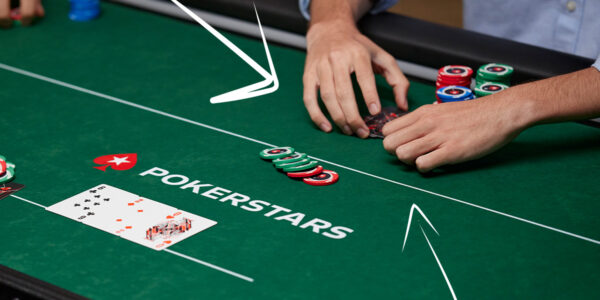Five Tips on Medium Suited Connectors
Let’s face it. We all have a slight affection for the aesthetically pleasing 87s and its close relatives. However, because of their shiny appearance, these are some of the most misplayed starting hands in No Limit Holdem. How should we go about maximising our EV with these hands at the table? Here are five useful tips.
Position Helps
This is perhaps an understatement. Compare a hand like 76s to a stronger one such as AKo. The way these hands realise their equity is very different. AKo is a hot or cold hand. Either it smashes the flop by hitting top-pair top-kicker or it misses entirely and has to normally rely on the showdown value of Ace-High for the remainder of the hand. We could say that AKo realises its equity suddenly or in one go. 76s, on the other hand, is more of a lukewarm hand, realising its equity more gradually, street by street. This holding will very often flop a draw of some sort or a pair plus a draw and can have anything between 4 and 15 outs to beat a top-pair type hand. Because of this slow, gradual realisation of equity, 76s likes to be in position. This is because position gives us more control over the pot-size and makes it less likely that we will be blown off our hand. All hands that have flush or straight draw potential will benefit greatly from getting to act last on all streets pot-flop – after all, we may need all five cards to realise all of our equity. As the suited connector flops a draw more often than any other type of hand, it benefits the most from position.


Consider 3-Betting Against Late Position Opens
One great thing about the suited connector is its ability to fold out hands that crush it pre-flop, while getting calls from hands it performs okay against. Imagine that a regular on the BU opens and we sit in the SB with 98s. By 3-Betting here, against a solid opponent, we are almost sure to fold out the likes of [A8o K8o Q8o T8o, 98o, J8s, Q8s, K8s, A9o, K9o, Q9o J9o, T9o, Q9s] This sub-range has 66% equity against our hand, and we are making our opponent fold all of it! Now let’s examine some hands that Villain will call our 3-Bet with. Against hands in the neighbourhood of KJs or AQo, we will have a respectable 37-41% equity. The conclusion is that by 3-betting, we fold out the unpaired hands which dominate us while playing against hands that are only slight favourites against us. This is why the suited connector often makes its way into a 3-bet range in a late position battle.
Play Passively Against Maniacs
A suited connector is a hand that will normally flop you something small or nothing at all. As a result, they do not like to build big pots unless fold equity is going to be forthcoming later on in the hand. A maniac is a hyper-aggressive sort of recreational player who will refuse to fold in most spots and apply a lot of pressure to our hand, making it hard to realise equity unless we hold a sturdy made hand or strong draw. Suited connectors, being underdogs to almost every other starting hand that is commonly raised pre-flop are going to need either fold equity, implied odds, or both to play. The more fold equity they have, pre-flop or post-flop, the more we should consider 3-betting them. The more implied odds they have, the more we should lean towards just calling an open. Against the maniac, we are getting paid off very often but cannot make him fold, therefore we seek to keep our investment down to see the flop. When this opponent opens the CO and we are on the BU with 65s, we shall elect to simply call and peek at the flop for cheap.
Call 3-Bets in Position
Because suited connectors have good equity against unpaired big cards, they will perform quite well in position against 3-Betting ranges. Not only will these hands win the pot often enough to make calling a normal sized 3-bet better than folding, but they will have some good implied odds against the real top stuff like AA or KK. Did you know that a hand like 87s has more equity against AA than any other starting hand type? AA and KK are just the sort of hands that like to lose big pots if we are lucky enough to flop those trip 8s or turn that straight. Do not fold 87s on the BU to a SB 3-Bet unless stacks are abnormally shallow. This brings us to our final point.
Deep Stacks Are Your Friend. Shallow Stacks are your Enemy
The deeper the stack, the more money it is possible to win by getting lucky with a suited connector. Imagine that we open in the CO with 76s and are 3-Bet by the BB. The effective stack is 135BB. Having this extra amount left behind will increase the value nut making hands such as our little suited connector. Similarly, big off-suit cards like AJo and KQo are now devalued due to their inability to flop nutted hands and tendency to get dominated and coolered. We are better off calling the 76s in this case than these bigger trouble hands.
Shallow stacks are a huge turn off for the suited connector. This morning I was dealt a superficially attractive T9s in the SB. A weaker player with a 35BB stack opened to 3BB on the BU and I was forced to fold. Calling here will not be worth it. Playing out of position, not closing the action is a recipe for disaster and Villain does not have enough money left behind to compensate me if I get lucky. Similarly, fold equity is low and if I 3-Bet this hand, I will have to go with it. This is pretty much the worst landscape for what is normally such a playable hand and so into the muck it goes.
Conclusion
Suited connectors are a powerful weapon with a little know how. Avoid shallow stacks like the plague, favour being in position, and do not be afraid to attack with these hands against players who can fold. Good luck at the tables!












